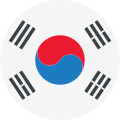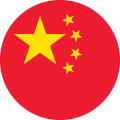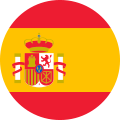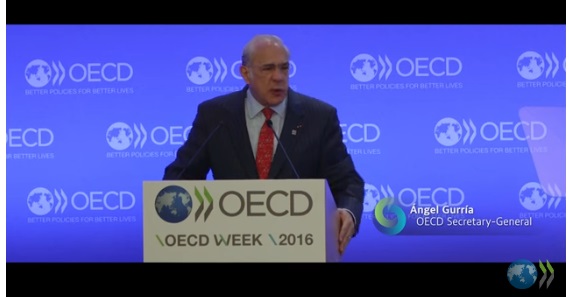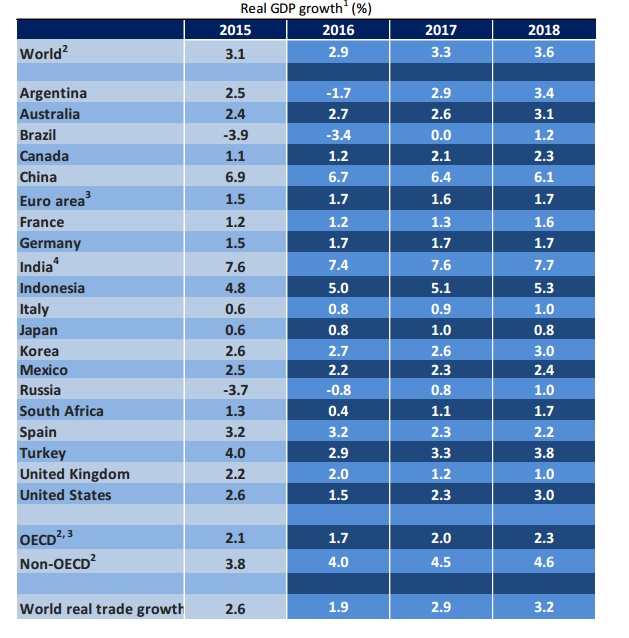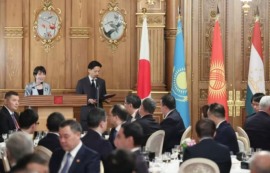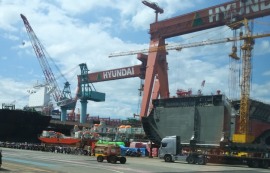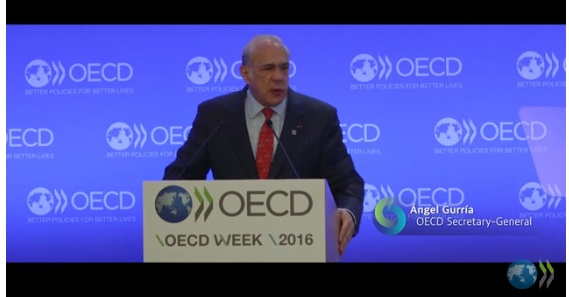 이미지 확대보기
이미지 확대보기OECD눈 우리 말로 경제협력개발기구로 일컬어진다.
영어 원문으로는 Organization for Economic Cooperation and Development이다.
2차대전 이후 존재해 왔던 유럽경제협력기구(OEEC)을 확대개편하면서 새로 출범했다.
미국의 원조를 받는 유럽 국가들이 그 회원이었다.
2차대전 이후 미국의 세계 지배전략으 일환으로 만들어졌다는 주장도 있다.
그러던 것을 1961년 9월 30일 전세계의 경제부흥을 위한 단체로 확대 개편하여 OECD로 만들었다.
OECD의 목적은 규약에 명시 되어있다.
OECD 창설회원국은 기존의 18개 OEEC 회원국에 미국, 캐나다 를 더한 20개국이다.
OECD회원이 되기 위한 기본 자격은
1) 다원적 민주주의 국가
2) 시장경제 체제 보유
3) 인권 존중하는 국가
등이다
이 OECD에 가입하기 위해서는 이사회의 초청에 전 회원국의 만장일치 동의를 얻어야 한다.
우리나라는 김영삼 대통령시절인 1996년 12월에 29번째 회원국으로 가입하였다.
한국은 가입 직후 IMF 외환위기를 겪었다.
34개국
그리스, 네덜란드, 노르웨이, 뉴질랜드, 덴마크, 독일, 룩셈부르크, 미국, 멕시코, 벨기에, 스웨덴, 스위스, 스페인, 슬로바키아, 슬로베니아, 아일랜드, 아이슬란드, 에스토니아, 영국, 오스트리아, 이스라엘, 이탈리아, 일본, 체코, 칠레, 캐나다, 터키, 포르투갈, 폴란드, 프랑스, 핀란드, 한국, 헝가리, 호주
OECD는 최고의사결정기구인 이사회와 집행이사회, 분야별 '분과위원회' 그리고 사무국' 등으로 구성되어 있다.
OECD 는 그동안 원자력기구(NEA) 국제에너지기구(IEA) 교육연구혁신센터(CERI) 유럽교통장관회의 사헬 및 서아프리카 클럽 등을 창설해왔다.
다음은 OECD 영문 소개
The Organisation for Economic Co-operation and Development (OECD) celebrated its 50th anniversary, but its roots go back to the rubble of Europe after World War II. Determined to avoid the mistakes of their predecessors in the wake of World War I, European leaders realised that the best way to ensure lasting peace was to encourage co-operation and reconstruction, rather than punish the defeated.
The Organisation for European Economic Cooperation (OEEC) was established in 1948 to run the US-financed Marshall Plan for reconstruction of a continent ravaged by war. By making individual governments recognise the interdependence of their economies, it paved the way for a new era of cooperation that was to change the face of Europe. Encouraged by its success and the prospect of carrying its work forward on a global stage, Canada and the US joined OEEC members in signing the new OECD Convention on 14 December 1960. The Organisation for Economic Co-operation and Development (OECD) was officially born on 30 September 1961, when the Convention entered into force.
Other countries joined in, starting with Japan in 1964. Today, 35 OECD member countries worldwide regularly turn to one another to identify problems, discuss and analyse them, and promote policies to solve them. The track record is striking. The US has seen its national wealth almost triple in the five decades since the OECD was created, calculated in terms of gross domestic product per head of population. Other OECD countries have seen similar, and in some cases even more spectacular, progress.
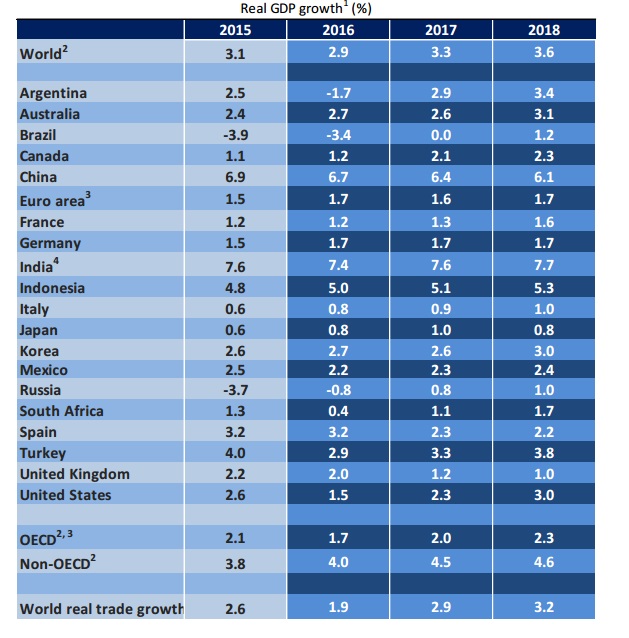 이미지 확대보기
이미지 확대보기So, too, have countries that a few decades ago were still only minor players on the world stage. Brazil, India and the People's Republic of China have emerged as new economic giants. The three of them, with Indonesia and South Africa, are Key Partners of the Organisation and contribute to its work in a sustained and comprehensive manner. Together with them, the OECD brings around its table 39 countries that account for 80% of world trade and investment, giving it a pivotal role in addressing the challenges facing the world economy.
김재희 기자 yoonsk828@


